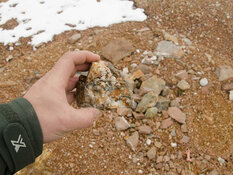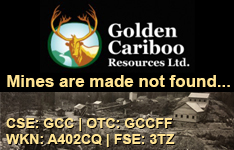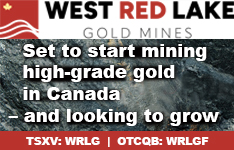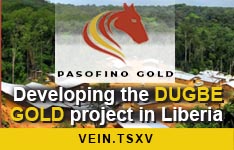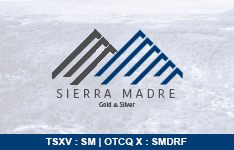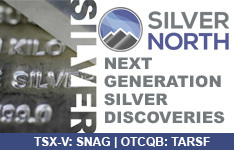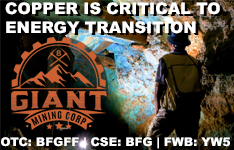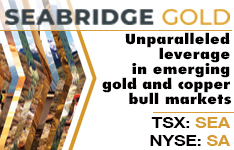West Red Lake Gold Mines Ltd. (WRLG:TSX.V; WRLGF:OTCQB; FRA:UJO) reported multiple high-grade gold intercepts from underground drilling at its 100%-owned Madsen Mine in the Red Lake Gold District of Ontario. The new results are from a new high-grade zone in the lower portion of the Austin Zone, an area newly undergoing definition drilling.
The results include three of the strongest intercepts reported to date from the mine's Austin Zone, with hole MM25D-12-4860-004 returning 7.75 meters grading 139.45 grams per tonne (g/t) gold (Au), including a 2.00-meter interval at 532.25 g/t Au. Two additional holes also reported notable grades: hole -005 intersected 8.70 meters at 74.70 g/t Au, and hole -002 returned 7.45 meters at 18.31 g/t Au.
These intercepts were drilled from the 12 Level of the Madsen underground workings, approximately 600 meters below surface, targeting an area that has not seen active mining since the 1950s and early 1960s. The company noted that the new intercepts fall along the same structural trend as previously defined high-grade lenses in South Austin.
According to Shane Williams, President and CEO in the news release, "We are only just beginning to get the underground drills into the lower portions of the main Austin Zone and we are already being rewarded with very high-grade, broad intercepts of gold mineralization, very similar to the high-grade lenses we have been defining in South Austin."
The Austin Zone is part of the broader Madsen Mine system, which also includes the South Austin, McVeigh, and 8 Zone mineralized structures. The Austin Zone currently hosts an Indicated mineral resource of 914,200 ounces grading 6.9 g/t Au, with an additional inferred resource of 104,900 ounces grading 6.5 g/t Au.
The company confirmed that visible gold was observed in multiple holes, including those not featured among the top intercepts, and that the mineralization is typically associated with quartz-pyrrhotite-arsenopyrite veining and silicification. All high-grade intervals from the reported drill holes showed strong alteration and vein development, consistent with prior Madsen intercepts.
These results form part of a broader underground definition drilling campaign that has already exceeded 150,000 meters at Madsen. The program aims to improve grade continuity, inform mine planning, and support operational stability as the mine continues its ramp-up phase.
Gold Sector Draws Record Capital Amid Global Uncertainty
Gold's 2025 momentum carried into October. As reported by Stockhead on October 7, the XGD index climbed 1% in morning trading on the ASX, following gold's surge to a new intraday high of US$3,922 per ounce. Analysts attributed the move to growing risk aversion, with investors seeking shelter amid a U.S. government shutdown and limited visibility on global economic conditions. The performance of gold and gold equities stood in contrast to broader market trends, with technology stocks retreating and the ASX briefly breaching the 9000 mark before edging down 0.13% by midday.
In a pivotal moment for financial markets, spot gold breached the US$4,000 mark during early Asian trading hours on October 8, signaling both a psychological and structural shift in global capital flows, as reported by Metals Daily. The milestone was reached at 03:00 BST, marking an acceleration in gold's multi-month rally that saw the metal climb from US$3,000 to US$4,000 in just seven months.
O'Keefe maintained the Buy rating and CA$1.80 per share price target, citing strong operational execution and a well-defined path toward commercial production.
Analysts described the move not as speculative exuberance but as a rational repricing of trust amid deepening concerns over sovereign balance sheets, the durability of fiscal policy, and growing skepticism toward fiat currencies.
The timing of the surge — while Western markets were closed — also underscored a broader eastward shift in monetary leadership, with Asia-based demand playing a central role. Central banks across emerging markets have accelerated both gold purchases and repatriation of physical reserves, a trend shaped in part by sanctions-related asset seizures and ongoing efforts to build parallel financial systems outside the U.S. dollar framework.
Precious metals and digital assets rallied in tandem on October 8, with gold futures surging past US$4,060 per ounce and silver climbing to US$48.70, their highest levels in years. Bitcoin also hovered near its recent all-time high of US$125,790, continuing its strong run in what analysts have labeled the "debasement trade."
According to Yahoo Finance, the upward momentum reflects investor demand for hard assets amid concerns over inflation, deficit-driven government spending, and monetary expansion. A weakening U.S. dollar — down roughly 9% year to date—has further supported demand for alternatives to fiat currency. Recent political developments in Japan added to global fiscal uncertainty, with the election of Prime Minister Sanae Takaichi, viewed as a fiscal dove, reinforcing expectations of stimulus-heavy policy.
Analysts at Nomura Securities noted that gold, silver, and bitcoin have emerged as simultaneous beneficiaries of this macroeconomic shift. Goldman Sachs recently raised its gold price forecast for December 2026 from US$4,300 to US$4,900, citing persistent ETF inflows and continued central bank accumulation as drivers of structural support.
Analysts Emphasize Operational Progress and Valuation Gap
Cantor Fitzgerald analyst Matthew O'Keefe reaffirmed his Buy rating on West Red Lake Gold on September 12, maintaining a target price of CA$2.20. At the time, this represented a 124% premium to the company's CA$0.98 share price. O'Keefe cited steady operational progress at the Madsen Mine, which produced 5,350 ounces of gold through June. The mill was operating at 650 tonnes per day with 95% gold recovery, and trial runs had been completed at 800 tonnes per day. He also noted over 150 kilometers of definition drilling, as well as continued advancement in shaft refurbishment, cemented rock fill (CRF) installation, and underground equipment mobilization.
On the financial side, O'Keefe reported second-quarter revenue of CA$24.3 million, gross profit of CA$8.6 million, and net income of CA$3.5 million. Operating cash flow totaled CA$5.9 million, with West Red Lake Gold ending the period with CA$23.7 million in cash and CA$1.7 million in working capital. "The company was cash flow positive in Q2/2025," O'Keefe wrote, "and should continue and build its working capital position in the months ahead."
Red Cloud Securities analyst Taylor Combaluzier reiterated a Buy rating with a revised target price of CA$2.30 per share.
He also analyzed the Preliminary Economic Assessment for the Rowan project, which outlined a post-tax Net Present Value of CA$125 million and a 42% internal rate of return at a gold price of US$2,500 per ounce. At a higher price of US$3,250, the project's value rose to CA$239 million with an internal rate of return of 82%. O'Keefe commented that the high-grade nature of Rowan "should ultimately drive a premium valuation," noting the company's stock was trading at just 0.4 times net asset value, compared to peer group averages of 0.8 to 1.0 times.
In a separate report on September 24, O'Keefe described Rowan as "a key growth project that will provide the company with a near-term path to producing over 100 Koz of gold at Red Lake." He confirmed that proceeds from a recent flow-through share financing would be used to advance the project's development.
On October 7, O'Keefe maintained the Buy rating and CA$1.80 per share price target, citing strong operational execution and a well-defined path toward commercial production. He reported that gold output for the third quarter reached 7,055 ounces, a 34% increase over the previous quarter, from 35,700 tonnes grading 5.4 g/t gold. According to O'Keefe, "WRLG continues to execute a disciplined ramp-up," highlighting key infrastructure milestones including operational underground waste storage and the planned start of shaft skipping in November 2025. He noted that management reaffirmed commercial production remains on track for early 2026 and that a detailed mine plan is expected by year-end. O'Keefe also underscored the company's financial position following a CA$40.7 million bought deal financing, stating West Red Lake Gold is "well-funded to complete the ramp-up."
John Newell of John Newell & Associates offered a similarly constructive view in commentary dated September 5, highlighting the company's strategic land position in the Red Lake district. He credited the Madsen Mine acquisition and ongoing exploration success as factors that had renewed investor interest. "The stock has spent years building a long base," Newell wrote, "and rising volume now points to a potential breakout."
On October 8, Red Cloud Securities analyst Taylor Combaluzier reiterated a Buy rating with a revised target price of CA$2.30 per share. The adjusted target reflected dilution from the September equity financing, but Combaluzier remained positive on operational developments. He reported that the Madsen Mine poured 7,055 ounces of gold at an average realized price of US$3,456 per ounce, generating gross proceeds of CA$33 million. According to Combaluzier, "The company has rapidly worked to turn around the asset since acquiring it in 2023 and can now take advantage of the robust gold price environment." He added that reconciliation between modeled and actual stope grades remained strong and that sill development contributed 25% to 30% of the milled tonnage during the quarter. He further noted that West Red Lake Gold is preparing to begin shaft skipping at a rate of 350 tonnes per day and has tested the mill with both mined and stockpiled ore, processing only direct-mined tonnes since August.
Defining Growth Potential in Red Lake's Underground Gold District
West Red Lake Gold has positioned the Madsen Mine for potential expansion through ongoing exploration, mine development, and targeted drilling programs. Following the acquisition of the Madsen asset in 2023, the company initiated a two-year turnaround strategy focused on infrastructure upgrades, definition drilling, and operational readiness.
As of July 2025, the Madsen mill had processed ore at an average rate of 650 tonnes per day, achieving a 95% gold recovery rate. From January through July, the mine produced 9,550 ounces of gold. Supporting this progress, recent bulk sample reconciliations from the Austin, South Austin, and McVeigh zones confirmed strong correlation between predicted and actual results.
In its investor presentation, the company highlighted ongoing efforts to establish commercial production by meeting key milestones. These include full shaft and CRF (cemented rock fill) plant operation, final rolling stock deliveries, and completion of the 2026 mine plan. The latter is critical to supporting grade guidance and determining development priorities within the high-grade South Austin and Austin panels.
Drilling in the 904 complex and East Drive area is scheduled to continue through the second half of 2025 and into 2026, with a total of 36,000 to 40,000 meters planned. The company is also targeting additional growth through the Rowan and Fork deposits. At Rowan, a Preliminary Economic Assessment published in August 2025 outlined a five-year underground toll milling scenario producing 35,200 ounces per year at an estimated US$70 million capital expenditure.
 Streetwise Ownership Overview*
Streetwise Ownership Overview*
West Red Lake Gold Mines Ltd. (WRLG:TSX.V; WRLGF:OTCQB; FRA:UJO)
The Madsen Mine's January 2025 Pre-Feasibility Study, prepared by SRK Consulting, projected a C$496 million net present value based on a US$2,640 per ounce gold price, with average annual free cash flow of C$94 million over six years. The mine plan assumes production from high-grade stopes averaging 8.2 g/t Au and leverages existing infrastructure, including a 800-tonne-per-day mill.
As the company continues to de-risk and develop the Madsen Mine, additional drilling and engineering updates are expected to further refine mine design and resource conversion efforts. According to West Red Lake Gold, larger stopes and tighter drill spacing have already contributed to significant gains in tonnage and grade in areas like the 1099/1100 and South Austin 4447 stope complexes.
Ownership and Share Structure
According to Refinitiv, strategic investor Sprott Resource Lending Corp. holds about 8% of West Red Lake Gold. Institutions own about 30%, while management, insiders, and advisors hold around 10%. The remaining shares are held by retail investors.
The company's market capitalization is CA$384 million, with a 52-week stock price range of CA$0.52 - CA$1.18.
| Want to be the first to know about interesting Gold investment ideas? Sign up to receive the FREE Streetwise Reports' newsletter. | Subscribe |
Important Disclosures:
- West Red Lake Gold is a billboard sponsor of Streetwise Reports and pays SWR a monthly sponsorship fee between US$3,000 and US$6,000.
- As of the date of this article, officers and/or employees of Streetwise Reports LLC (including members of their household) own securities of West Red Lake Gold.
- James Guttman wrote this article for Streetwise Reports LLC and provides services to Streetwise Reports as an employee.
- This article does not constitute investment advice and is not a solicitation for any investment. Streetwise Reports does not render general or specific investment advice and the information on Streetwise Reports should not be considered a recommendation to buy or sell any security. Each reader is encouraged to consult with his or her personal financial adviser and perform their own comprehensive investment research. By opening this page, each reader accepts and agrees to Streetwise Reports' terms of use and full legal disclaimer. Streetwise Reports does not endorse or recommend the business, products, services or securities of any company.
For additional disclosures, please click here.






